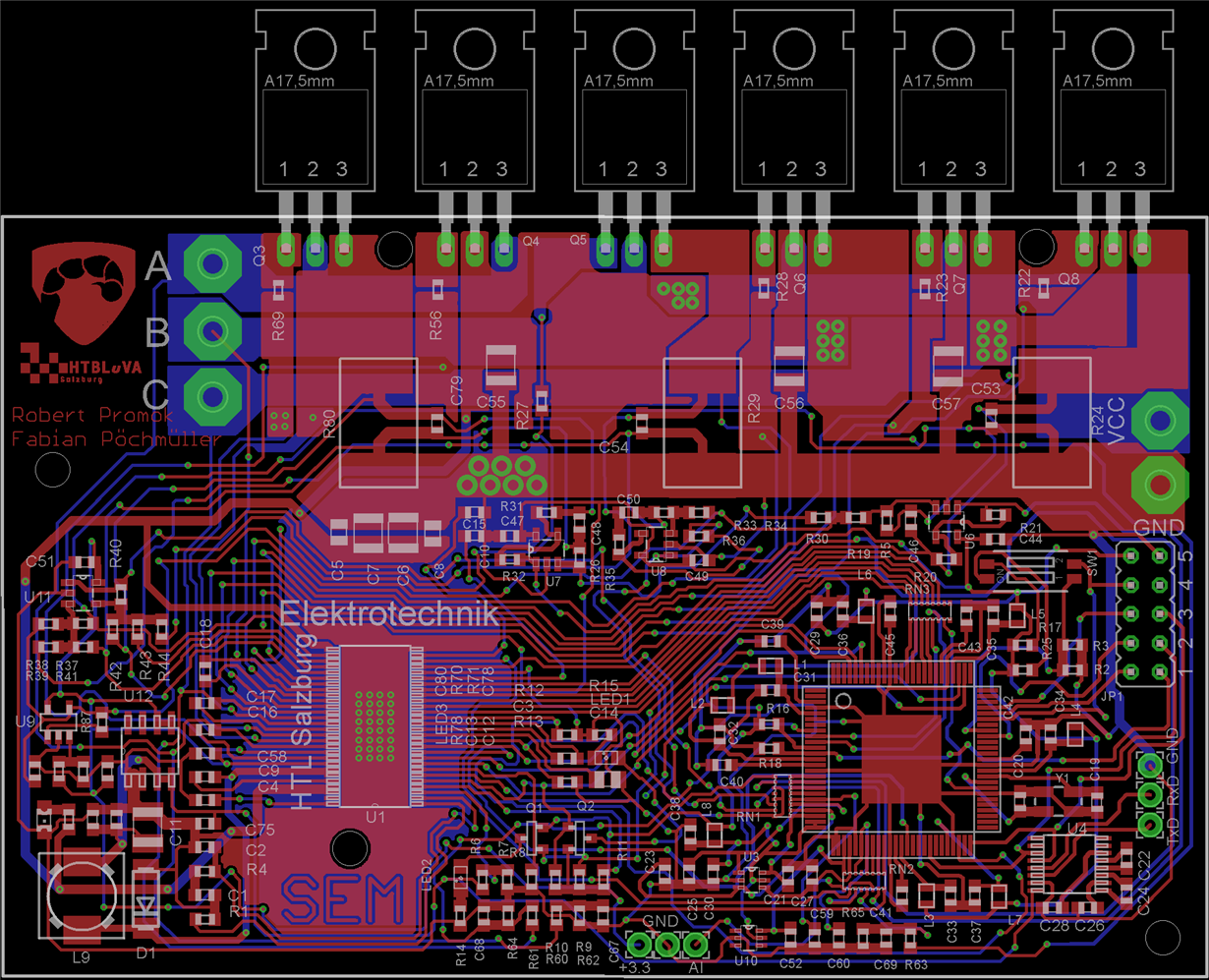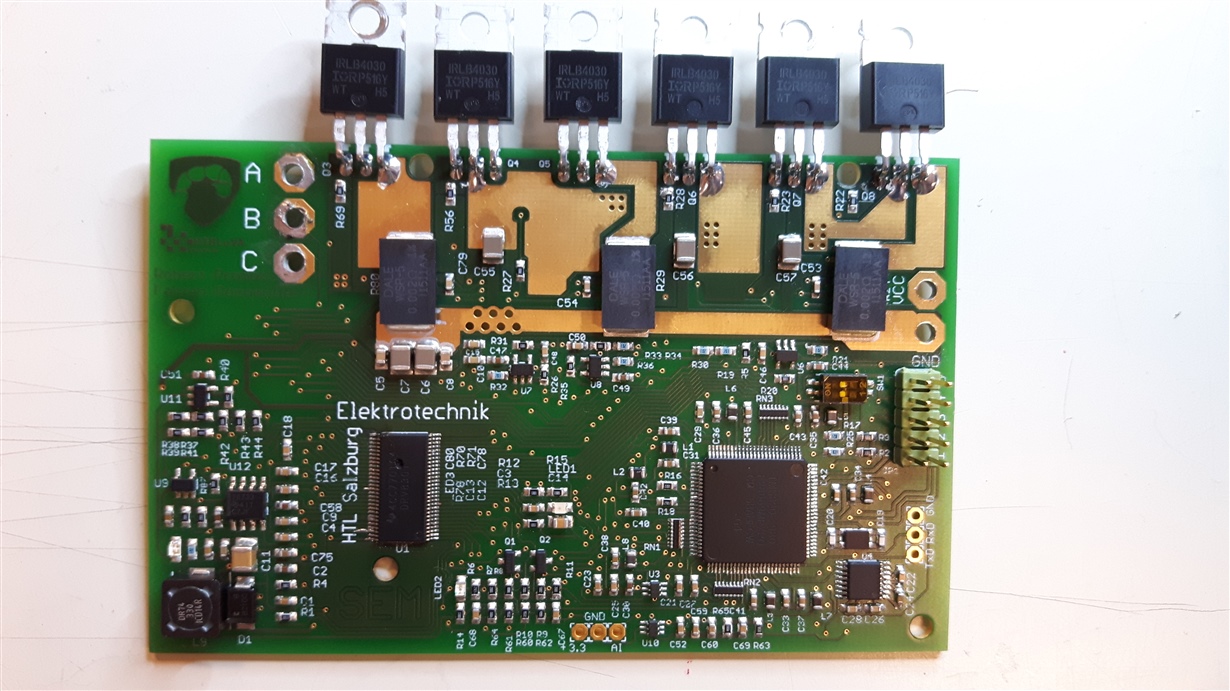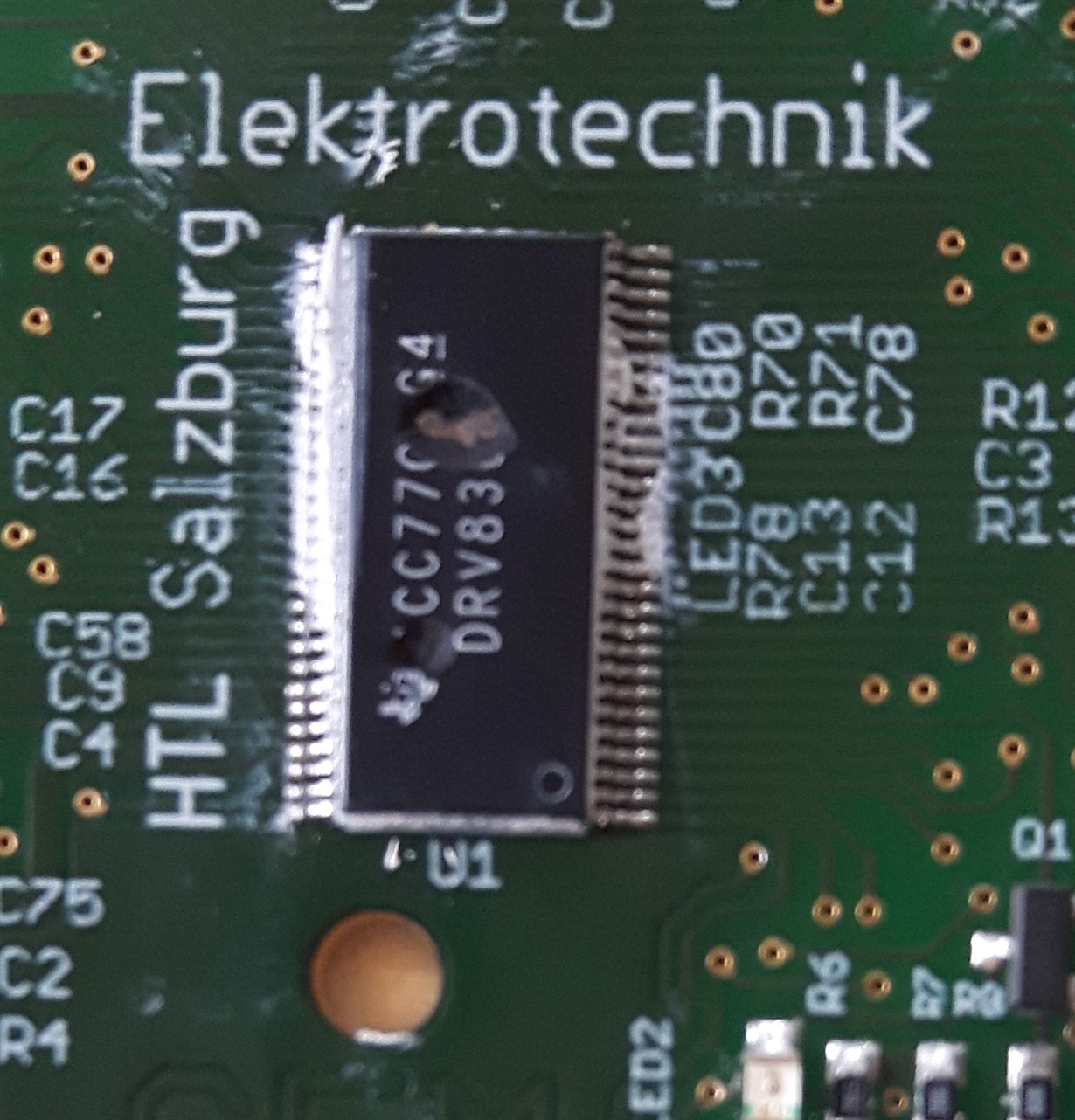Hello,
for our project of an electrically powered vehicle, we designed a PCB based on the schemetatics of the reference design "DRV8301-69M-Kit". For this reason, we decided to combine the schematics of the ControlCard and the BoosterPack in one PCB. We used exactly the same components as mentioned in the BOM, the only differences regard the types of MOSFETs, since we needed a TO-220 package, and the voltage division to measure the bus voltage (VDCBUS), which was unintended because we forgot to implement it.
During the first test, we slowly increased the supply voltage to 48V and the current consumption was about 20mA. Not having connected any load, we managed to run an example program successfully. The temperature of the DRV8301 increased noticeably and the current rose to about 110mA. Also, we could measure an AC voltage at the outputs for the motor. Afterwards, we also tested to switch on the power supply without a delay to the 48V several times, which worked as well. The next step was to connect a PMSM, which could be identified by the identification routine in the GUI successfully. Somethimes, though, when we tried to run the motor, the connection the the MC was cut, but sometimes worked again after reconnect. After some time, we tried again with the example project (lab04a), but shortly after clicking the execute-button in CCS, the DRV8301 blew up. We've tested this scenario with two different PCBs, which always resulted in the same problem. In both cases, the explosion holes of the DRV8301 appeared at the same position.
Since we were working with example projects, we can exclude a cause by the software.What could these explosions of the DRV8301 be due to? Are there any protection mechanisms for the DRV8301 that might be faulty?
Please find a picture of our layout with the damaged DRV8301 enclosed.
Thank you for any help in advance!
Regards




